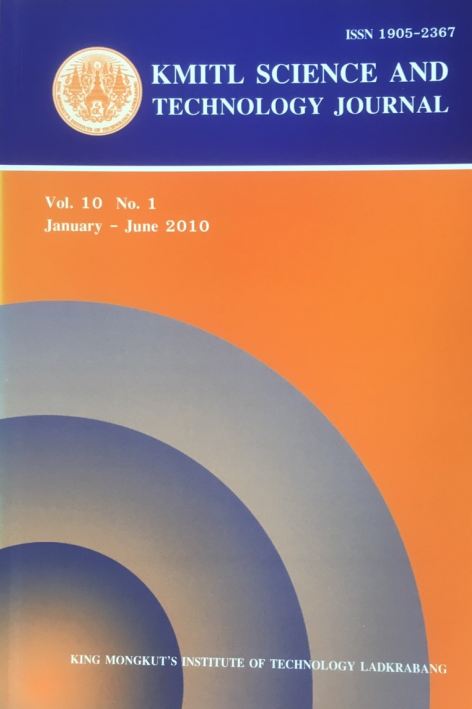Modelling of Aerosol Parameters Retrieval Algorithm Based on Mie Scattering Lidar: APRA
Main Article Content
Abstract
The software package APRA (Aerosol Parameters Retrieval Algorithm) was written in MATLAB R2008a. It allows the possibilities to determine the vertical profiles of tropospheric range corrected signals, depolarization ratios, aerosol volume backscattering coefficients and aerosol volume extinction coefficients from the measured dataset of Mie Scattering Lidar. In order to monitor the program efficiency, both pseudo and real data were used for the program demonstration, and finally the retrieved results from raw data of Mie Scattering Lidar measurement in Phimai district, Nakhon Ratchasima province of Thailand were performed and subsequently compared to the previous results retrieved manually from the same data.
Keywords: Software package, APRA, pseudo data, Fernald - Klett method, Mie Scattering Lidar
*Corresponding author: E-mail: sirilukr@swu.ac.th
Article Details
Copyright Transfer Statement
The copyright of this article is transferred to Current Applied Science and Technology journal with effect if and when the article is accepted for publication. The copyright transfer covers the exclusive right to reproduce and distribute the article, including reprints, translations, photographic reproductions, electronic form (offline, online) or any other reproductions of similar nature.
The author warrants that this contribution is original and that he/she has full power to make this grant. The author signs for and accepts responsibility for releasing this material on behalf of any and all co-authors.
Here is the link for download: Copyright transfer form.pdf
References
[2] J. A. Reagan, M. P. McCormick and J. D. Spinhirne, 1989. LIDAR Sensing of Aerosols and Clouds in The Troposphere and Stratosphere, Proc of the IEEE, 77 (3), 433-445.
[3] Y. Motoki, Z. Jixia, M. Kohei, I. Toshikazu, A. Tetsuo and L. Lichou, 2002. Observation of Troposheric Aerosol by Using a Mie Lidar: Observation at Arid Region in China, Journal of the Communications Research Laboratory, 49 (2), 233-242.
[4] K. Iokibe, Y. Toyota, O. Wada and R. Koga, 2005. A Scheme to Classify Clouds with the Depolarization Ratio and Backscattering Coefficient Measured by Lidar, Memoirs ofthe Faculty of Engineering, Okayama University, 39, 93-101.
[5] S. Ruangrungrote, A. Intasorn and A. Chabangbon, 2007. Observation of Tropospheric Aerosol Using Mie Scattering LIDAR at Srisamrong, Sukhothai Province. Naresuan University Science Journal, 4 (1), 25-30.
[6] S. Ruangrungrote, A. Intasorn and A. Chabangbon, 2008. Tropospheric Aerosol Volume Backscattering Coefficients Determination Using Mie Lidar at Phimai District, Thailand, Proc of Int. Symp. on Geosci Resources and Environ. of Asian Terranes: GREAT 2008, Bangkok, Thailand, 536-542.
[7] S. Ruangrungrote, A. Intasorn, A. Rungjang and A. Chabangbon, 2009. Two Approaches of Tropospheric Aerosol Volume Backscattering Coefficient Determination Using Mie Scattering LIDAR in Sukhothai, King Mongkut’s University of Technology Thonburi Research and Development Journal 32, 77-87.
[8] N. Sugimoto, 2001. NIE Compact Mie Scattering LIDAR (532 nm, dual polarization), User Manual, National Institute of Environmental Studies of Japan, Japan.
[9] V. M. Karyumpudi, S. P. Palm, J. A. Reagen, H. Fang, W. B. Grant, R. M. Hoff, C. Moulin, H. F. Pierce, O. Torres, V. E. Browell and H. S. Melfi, 1999. Validation of the Saharan Dust Plume Conceptual Model Using Lidar, Meteosat, and ECMWF Data, Bul. Amer. Meteor. Soc., 80, 1045-1075.


